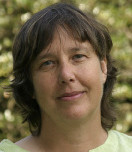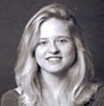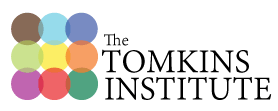It was the decision of Silvan Tomkins’ son, Mark, to ask for help not from any of the scientists who had worked with Professor Tomkins during his active career, but from a clinician who had spent the past decade working with Tomkins on possible applications of the theoretical work that had occupied him for more than forty years. Donald L. Nathanson, MD, traine d initially as an endocrinologist, then as a psychiatrist, had committed himself to study the role of affect in every aspect of human life. Nathanson had worked closely with Tomkins during the two year gestation of his monograph Shame and Pride: Affect, Sex, and the Birth of the Self. Tomkins respected the amount of work expended to make his ideas clear to a wide audience, and was grateful for the opportunity to go over every page of the manuscript to make sure it was free of errors. He expressed great respect that Nathanson had extended Tomkins’ work on affect and drive to develop a matching and interwoven theory of sexuality. Dedicated to Tomkins, this book was released early in 1992, some months after his death.
d initially as an endocrinologist, then as a psychiatrist, had committed himself to study the role of affect in every aspect of human life. Nathanson had worked closely with Tomkins during the two year gestation of his monograph Shame and Pride: Affect, Sex, and the Birth of the Self. Tomkins respected the amount of work expended to make his ideas clear to a wide audience, and was grateful for the opportunity to go over every page of the manuscript to make sure it was free of errors. He expressed great respect that Nathanson had extended Tomkins’ work on affect and drive to develop a matching and interwoven theory of sexuality. Dedicated to Tomkins, this book was released early in 1992, some months after his death.
With the assistance of Dr. Nathanson’s long time colleague, psychiatrist Vernon C. Kelly, Jr., MD, a campaign was mounted to find other clinicians who shared their conviction that emotion deserved far more attention than it received at that moment. Dr. Kelly took the responsibility for all educational programs presented by the Institute, and as its Training Director began to find new ways to gain an audience for these ideas. Using their own personal funds, they organized an October 1993 public conference in Philadelphia that presented the basic tenets of Tomkins’ Affect Theory, Nathanson’s work on the psychology of shame and the relation between affect and psychopharmacology, and Kelly’s work with Tomkins on a blueprint for interpersonal intimacy leading to a new system of couples’ therapy that Dr. Kelly derived from this concept. More than half of those who attended joined the Institute and took an active part in its work
 Dr. Kelly initiated a Study Group system for which they developed a curriculum based on selected passages from Tomkins’ Affect Imagery Consciousness (AIC) and sections culled from Shame and Pride. Dr. Kelly developed the complex manuals and protocols required to allow certification of both the annual conferences and the Study Groups for Continuing Education credit acceptable to all the major professional organizations. As the leadership of the Tomkins Institute began to study the recently released final volumes of AIC, a Second Year program was added to the Study Group syllabus. Under the leadership of New York-based psychologist Melvyn Hill, a committee then developed a Third Year program concentrating on the management of clinical issues. A list of all the annual conferences may be found elsewhere on this site, for each of which an album of audiotapes may be purchased.
Dr. Kelly initiated a Study Group system for which they developed a curriculum based on selected passages from Tomkins’ Affect Imagery Consciousness (AIC) and sections culled from Shame and Pride. Dr. Kelly developed the complex manuals and protocols required to allow certification of both the annual conferences and the Study Groups for Continuing Education credit acceptable to all the major professional organizations. As the leadership of the Tomkins Institute began to study the recently released final volumes of AIC, a Second Year program was added to the Study Group syllabus. Under the leadership of New York-based psychologist Melvyn Hill, a committee then developed a Third Year program concentrating on the management of clinical issues. A list of all the annual conferences may be found elsewhere on this site, for each of which an album of audiotapes may be purchased.
Between 1994 and 1997, Drs. Nathanson and Kelly produced a small journal featuring articles on theoretical and clinical matters called The Bulletin of the Tomkins Institute. In 1996, Gilbert Levin, PhD, director of the highly regarded symposia produced for the Cape Cod Institute summer programs, initiated Behavior OnLine, the first Internet-based site through which the lay public could address questions to professional psychotherapists. Dr. Nathanson was asked to open this series with an interactive offering called the Shame and Affect Theory Forum, which he led until mid-2003 when the Institute began work on its own website. Under the direction of editor John Brodsky, MD, the Tomkins Institute for  several years published a newsletter featuring articles about affect and script-based interpretations of sociocultural matters including feature films and current events. Members have given formal presentations to a wide range of scholarly and clinical organizations, consulted for many newspapers and magazines, advised organizations and local governments, and taught in a surprisingly large number of venues. And the steady incorporation of Affect Script Psychology insights into both their personal and professional lives has resulted in members publishing a number of useful and inspiring books.
several years published a newsletter featuring articles about affect and script-based interpretations of sociocultural matters including feature films and current events. Members have given formal presentations to a wide range of scholarly and clinical organizations, consulted for many newspapers and magazines, advised organizations and local governments, and taught in a surprisingly large number of venues. And the steady incorporation of Affect Script Psychology insights into both their personal and professional lives has resulted in members publishing a number of useful and inspiring books.
In June, 2009, after eighteen years as Executive Director, Dr. Nathanson felt it was time to step down from his leadership role. Concerned about the future of the Institute, he contacted the Rev. David McShane who was a long time personal friend of Silvan Tomkins and an avid advocate of Silvan’s work. Rev. McShane was one of the original members of the Institute and its official Chaplin. He was, therefore, well known and highly respected by members of the Institute. He made calls all over the country to determine the interest of the general membership in continuing the mission of teaching and promoting Affect Script Psychology through the Institute. As a result of his outreach, a number of people decided to meet in Philadelphia to discuss the future of the Institute. Those in attendance included Rev. McShane, Lauren Abramson, John Brodsky, Gary David, Pat Field, Charles Gaby, Jonathan Grindlinger, and Vick Kelly, amongst others. Over two days of intensive meetings, it was clear that the interest-excitement in Affect Script Psychology remained high and that there was a mutual desire to revitalize the Institute and to extend its reach worldwide both to professional and to lay audiences.
A new Board was selected with Gary David and Vick Kelly to act as Co-Chairs of the Board and Dr. Nathanson was appointed as Founding Executive Director Emeritus. In light of the Board’s decision to expand outside of Philadelphia, Charles Gaby volunteered to begin research into the possibility of holding a meeting in Fort Worth, Texas. Over the next four years, the institute held both a successful meeting in Fort Worth and a second in Washington DC organized by Joe Izzo and Nancy MacConnachie.
 In the fall of 2013, Lauren Abramson stepped forward to lead the Tomkins Institute with the support of David McShane. Lauren had also been a personal friend of Silvan’s as well as his student. A few months later Mary Abrams became Co-Chair along with Lauren. With Lauren’s practice in restorative justice and Mary’s background in movement and consciousness practices, their perspective broadened the impact of the Tomkins Institute.
In the fall of 2013, Lauren Abramson stepped forward to lead the Tomkins Institute with the support of David McShane. Lauren had also been a personal friend of Silvan’s as well as his student. A few months later Mary Abrams became Co-Chair along with Lauren. With Lauren’s practice in restorative justice and Mary’s background in movement and consciousness practices, their perspective broadened the impact of the Tomkins Institute.
In 2018 Dr. Phil Rose was voted in as the President of the Board of Directors. Hailing from Canada, Phil has been a pioneer in bringing affect theory to the fields of Media Ecology and Popular Music Studies. As President he shepherded the Institute during two annual gatherings in Chicago (2018) and Baltimore (2019), and helped the Institute vision new offerings designed to enliven our learning community and bring in new members. These include a thriving Affect/Script Reading Group, and quarterly e-gatherings of Institute members.
